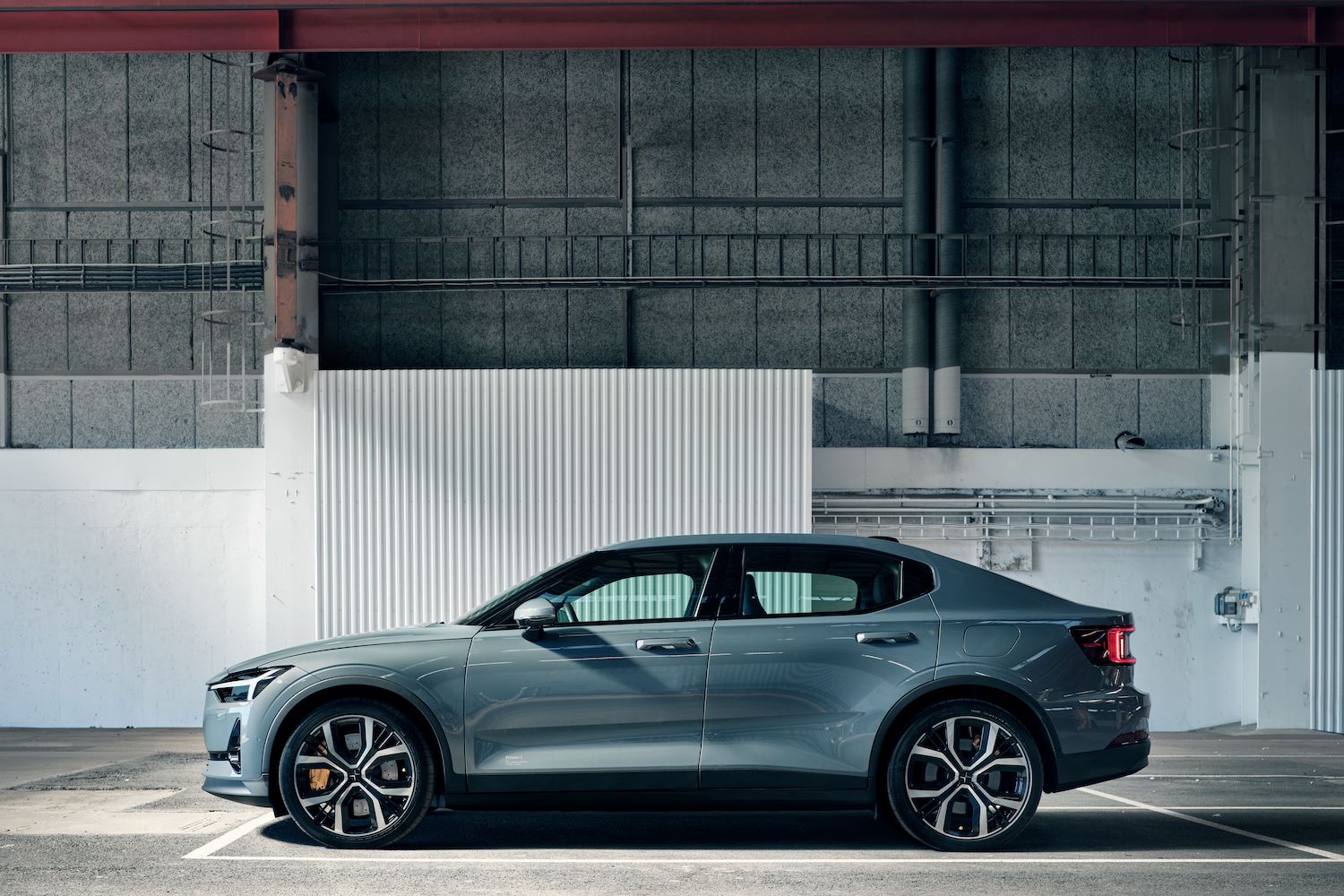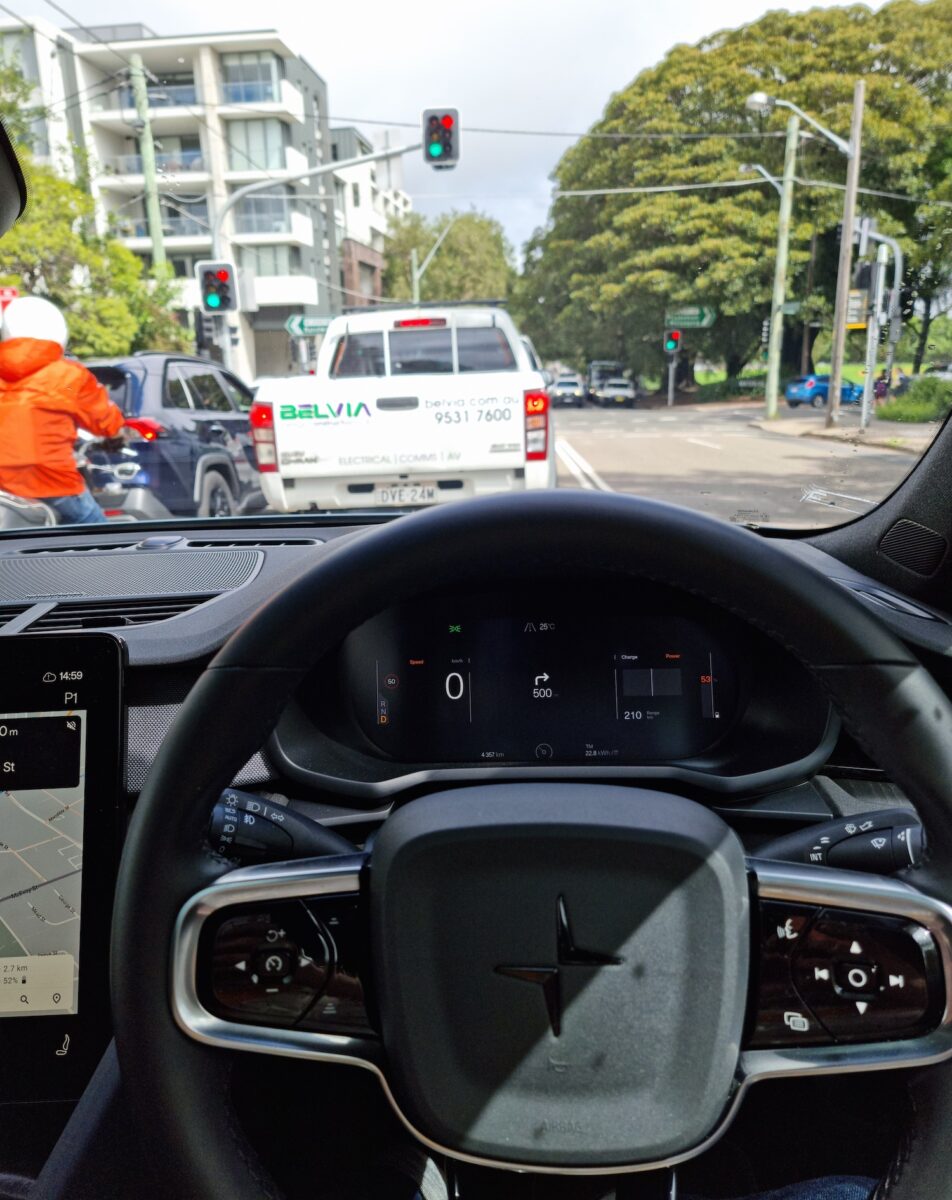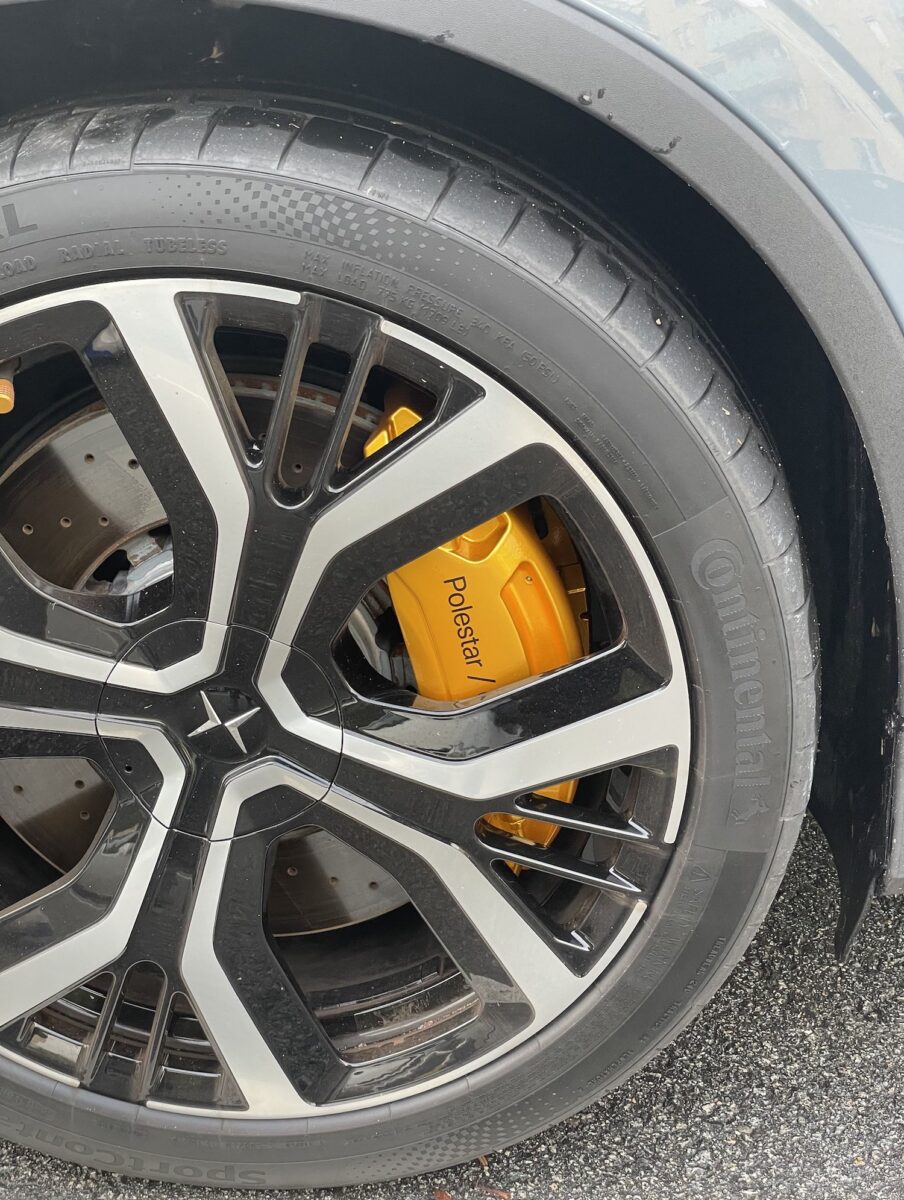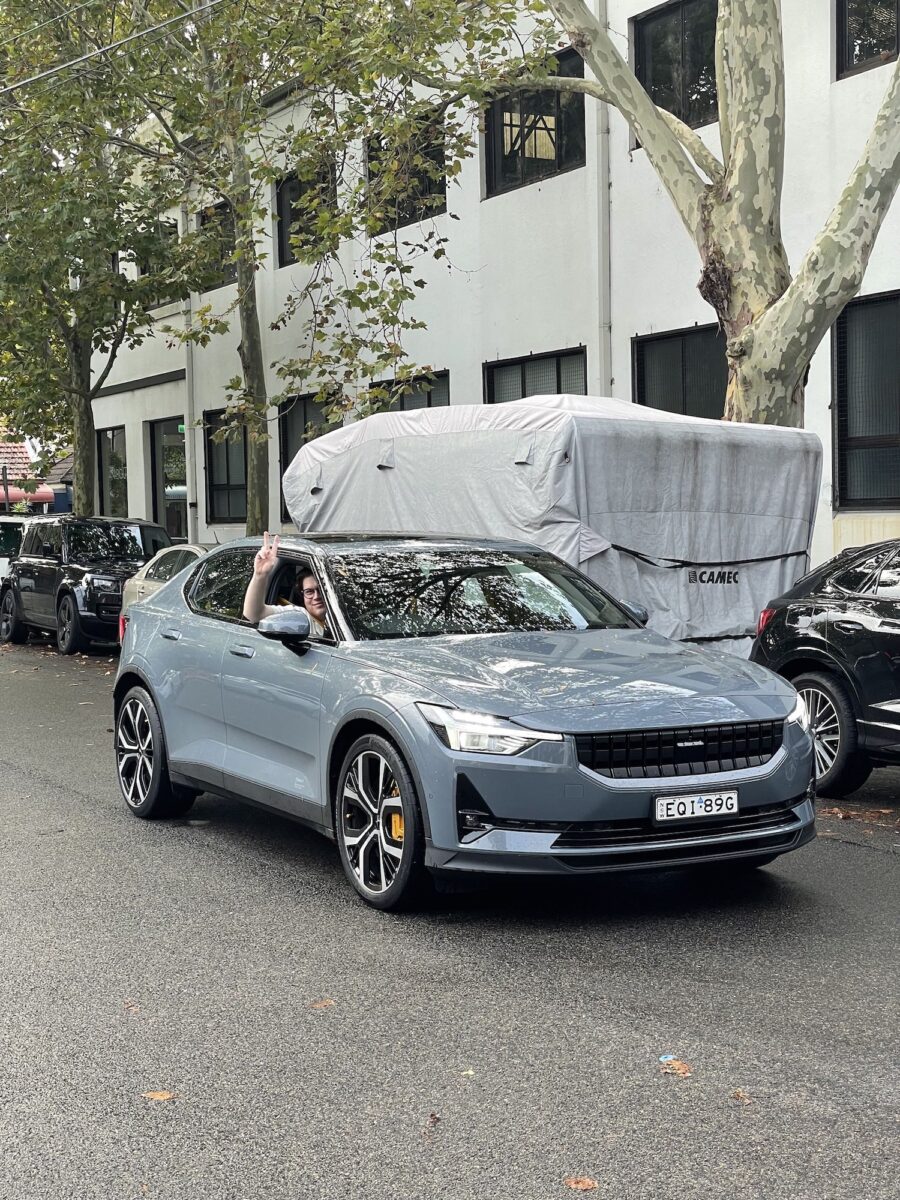
It’s always exciting when a new car brand enters the market – but Polestar is a particularly intriguing prospect.
For those who don’t know, Polestar was originally Volvo’s high-performance division, akin to BMW’s M or Nissan’s Nismo, for example. It’s since been spun off into a marque in its own right and has shifted its focus towards electric vehicles. Indeed, Polestar has lofty aspirations to become the world’s first carbon-neutral car brand – a bold mission.
The Polestar 1, the brand’s first vehicle, was a sporty limited production hybrid coupe that was only available in a few select markets. The Polestar 2, however, is purely electric and the brand’s first mainline production car – as well as the first Polestar to reach Australian shores.
But why try and launch a new electric car brand in Australia when the federal government here has been so sluggish and done so much to discourage EV ownership?
It’s simple. The Polestar 2 is going at Tesla’s throat – specifically the Model 3’s. The Tesla Model 3 has long been the top-selling EV Down Under, largely because it’s a great car, but also because there’s not much competition. Other car brands have shied away from offering similar-sized EVs in Australia because they’ve figured they can’t survive against the dominance of the Model 3.
So how does the Polestar 2 weight up against the Model 3? Indeed, how does it weigh up more broadly? Well, we drove the new Polestar 2 to find out, and spoiler alert: it weighs up pretty well.

First things first: pricing. Polestar 2 pricing starts at $69,332 (standard range, single motor, New South Wales pricing) – more than the Tesla Model 3 which starts at $63,900, but less than virtually any other similarly-sized EV from premium brands like Audi or Polestar’s parent brand Volvo. In fact, it costs less than the Volvo C40 and XC40 Recharge, which share its platform. The main thing is that it’s in the ballpark of a Model 3.
The Polestar 2 is also slightly larger than a Tesla Model 3 and is more akin to a crossover SUV than a compact sedan or hatchback. More on that later. It’s here where the comparisons end. Segment positioning aside, the Polestar 2 is a very different beast to the Model 3, or really anything else on the market.
RELATED: Germany’s Top Car Brands Are In A Spot Of Bother Thanks To Tesla
Maybe it’s just because we’re so used to Teslas now but the Polestar 2 really stands out on the road – nothing else looks like it, it’s so futuristic. You really do feel as if you’re driving the future of motoring. It makes other cars look ancient in comparison.
Part of this has to do with its unique body style, which defies easy description. It’s not a hatchback, it’s not an SUV… It’s more akin to a large, jacked-up sedan. With its big wheels, deeply sloping rear hatch and muscular stance, it feels incredibly purposeful.

The fact that it’s also got some serious performance bona fides really backs that feeling up, too. With 300kW and a 0-100km/h time of just 4.5 seconds in Long Range Dual Motor guise, the Polestar 2 moves its mass in an impressive fashion. The novelty of chopping petrol-powered cars as the lights turn green never gets old – they just don’t expect to see a car the Polestar 2’s size haul ass like that!
The Performance package further benefits from Öhlins suspension and big Brembo brakes, the latter of which are painted in eye-catching Swedish gold – a great aesthetic touch.
Indeed, the Polestar 2 is filled with lots of great aesthetic touches, particularly with the addition of the Performance package. Like the brake calipers, the seatbelts in the Polestar 2 Performance are gold. It sounds dumb but it makes the car feel much more premium than it actually is – typically coloured seat belts are the domain of luxury or sports cars. I don’t know why more car brands also do coloured seat belts but I digress.
RELATED: ‘Peasant Trim’: The Telltale Sign You Skimped Optioning Your Luxury Car
Other nice touches include the tasteful real wood panelling that stretches across the dash and centre console, subtle body-coloured external badging and the awesome-looking four-spoke rims.
There’s plenty of Volvo DNA in the Polestar 2 as well – as evidenced by parts sharing like the use of Volvo’s familiar square-shaped wheel hub design and many of the buttons and switches throughout the car. This is by no means a bad thing: it serves the Polestar well to remind passengers of its Swedish heritage, even if the car is entirely made in China.

Yep – Polestars are made in China. China’s Geely Auto bought out Volvo back in x and plan to make all Polestars in China going forward. The car has mostly been designed in Sweden (it does look very Scandi) but this is not a Swedish car.
But that’s also not a bad thing, necessarily. The quality of Chinese-made cars has made leaps and bounds in recent years, and the Polestar 2 is particularly impressive on that front. Volvo has always had a great reputation for build quality and if you didn’t know better, you’d assume the Polestar 2 was also made in Sweden. Not to keep framing everything around Tesla but it also shits all over Tesla when it comes to build quality.
RELATED: American & Japanese Car Makers Are Going To Be Left Behind By China
All in all, it’s a very premium driving experience – which you’d kind of hope, considering its price tag puts it up in luxury car territory, even with state incentives softening the blow.
The biggest negative about the Polestar 2 is also one of its biggest selling points. Compared to a Tesla – or indeed virtually any other modern luxury car – the Polestar 2 is surprisingly light on tech, despite the fact it does the whole ‘put everything on a touch screen’ thing that many cars are doing these days.
There’s no radar cruise control, there’s no 3D climate control, there’s no lane departure assist, there’s no self-parking… The MMI as well just runs some Android kernel and doesn’t feel particularly bespoke, although those familiar with Google products like Maps probably won’t be fussed.

But actually, we don’t see this as being a deal-breaker. Indeed, we think the Polestar 2’s very conventional driving experience makes it great for those who want an EV but might be intimidated by the really tech-y nature of many modern cars. It’s an absurdly easy car to drive, and there’s a lot to be said about that.
Indeed, simplicity really is the name of the game here with the Polestar 2. In typical Scandi fashion, it’s beautifully minimalistic. It’s very design-forward while being unpretentious. The now-defunct Swedish brand SAAB always used to be the butt of jokes that it was the car of choice for architects and other creative types but we see that being the case with Polestar, but entirely in a positive fashion.
In essence, the Polestar 2 is a car for those who want something a bit different. It represents a changing of the guard in modern motoring – in lots of different ways – as well as one of the best-value premium car experiences on the market. We were impressed, and we think you’ll be too.
Find out more about the Polestar 2 and book a test drive at Polestar’s online showroom here.
Read Next
- The New Audi S3 Is The Swiss Army Knife Of Sports Cars
- I Drove Porsche’s Insane New Electric Car. It Blew My Mind
The post The Polestar 2 Threatens Tesla’s Dominance Down Under appeared first on DMARGE.
0 Commentaires